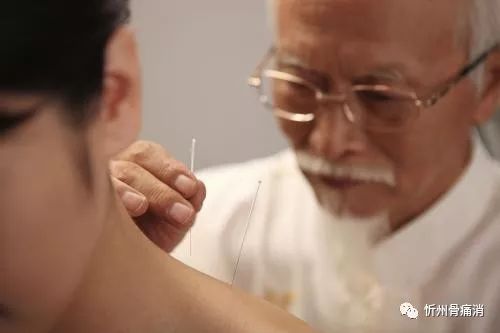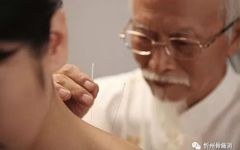

Bloodletting therapy, known as “Ciluo therapy” (刺络法), involves puncturing specific points along the body’s meridians, typically on the surface of the body or at the distal ends of the limbs. Traditional Chinese Medicine (TCM) posits that when pathogenic factors invade the body, the body’s righteous Qi (正气) attempts to expel these pathogens outward. Even if the pathogens cannot be expelled entirely, they can be pushed to the surface, away from the heart. Consequently, changes in internal organs may manifest on the skin’s surface. The purpose of Ciluo therapy is to create an “opening” at these concentrated areas of pathogens, allowing them to exit the body along the meridians.
1. Treatment for patients with cerebral hemorrhage (stroke):
In cases of hemorrhage, patients often experience unconsciousness. Puncturing the Yintang (印堂), Taiyang (太阳), Taichong (太冲), and Shizhu (十指) points to draw 1-5 drops of blood can help promote early consciousness and reduce the severity of paralysis. Note: If a patient remains unconscious for more than 24 hours, the rate of paralysis exceeds 90%. If it exceeds 72 hours, the rate of paralysis reaches 100%, making treatment extremely difficult. Therefore, promoting early consciousness is a crucial technique. Once the patient regains consciousness, puncture the Dazhui (大椎), Quchi (曲池), and Weizhong (委中) points to draw blood, which may lead to recovery.
2. For bone nerve pain: If it is related to the Gallbladder meridian (胆经), carefully examine the Yanglingquan (阳陵泉) and Fenglong (丰隆) points for any engorged blood vessels; if present, bloodletting may lead to recovery.
3. For individuals prone to developing boils or abscesses, bloodletting at the Xin (心) point is recommended.
4. For early-stage conjunctivitis or when a stye has not yet become purulent, puncturing the Taiyang point to draw 7-9 drops of blood, along with 3-5 drops from the tips of the second toes, can lead to recovery by the next day.
5. For severe rheumatism in the legs, puncturing 3 inches beside the third, fourth, and fifth thoracic vertebrae can yield significant results; many patients with chronic conditions have recovered after just 1-2 treatments.
6. For gastric and duodenal ulcers, puncture the blue veins from the Neiting (内庭) to the Jiexi (解溪) points, and near the outer ankle. For gastric ulcers, look for blood vessels within 0.5 inches above and 2.5 inches below the Tiaokou (条口) point.
7. For chronic nephritis:
(1) Bloodletting at the Naoyu (臑俞) point can help if yellow fluid is present; once the fluid is gone, the patient will recover.
(2) Around the kidneys.
(3) Bloodletting around the navel (do not puncture the center).
8. For hepatitis, puncture the Yangjiao (阳交), Zusanli (足三里), Quze (曲泽), Yanglingquan (阳陵泉), and Sanyinjiao (三阴交) points.
9. For ascites due to liver cirrhosis, use the same points as for hepatitis, plus Shenshu (肾俞), Yaoyang (腰俞), and Tiaokou (条口) (0.5 inches above and below), and Gan Shu (肝俞).
10. Effective points for hemorrhoids:
(1) Chaojiao (龊交) point (inside the mouth) can be punctured 1-3 times for recovery.
(2) For swollen and ulcerated hemorrhoids, bloodletting at the Weizhong (委中) point can reduce pain.
11. For insomnia:
(1) Puncture the Shenmen (神门), Xingjian (行间), and Zusanli (足三里) points.
(2) Puncture Dazhui (大椎), Shendao (神道), and Zhongwan (中脘) points, followed by cupping.
12. For cervical spondylosis: locate the tender points at Tianzong (天宗), Jianzheng (肩贞), and Chize (尺泽) points.
13. For any internal chest injuries, bloodletting must be performed at Dazhui (大椎), Jianjing (肩井), and then at the injury site.
14. For shoulder periarthritis: puncture the Shen Guan (肾关) point (1.5 inches below Yanglingquan), and Chize (尺泽) point; one treatment can yield results.
15. For acute and chronic throat diseases: puncture Dazhui (大椎), Erjian (耳尖), the posterior auricular vein, Shaoshang (少商), Quchi (曲池), and Taiyang (太阳) points; bloodletting can reduce pain.
16. For impotence:
(1) Puncture the Shenshu (肾俞) and Fuliu (复溜) points to draw blood, and apply cupping at Guanyuan (关元) and Shenshu (膀胱俞) for 15 minutes.
(2) Bloodletting at Sanyinjiao (三阴交), Mingmen (命门), and cupping at Shenshu (肾俞) and Xuehai (血海).
17. For hypertension: puncture the Taiyang (太阳), Dazhui (大椎), Erjian (耳尖), and Quchi (曲池) points; bloodletting can lower blood pressure. Note: Do not drink water within one hour after bloodletting, as it may reduce effectiveness.
18. For asthma: puncture Dazhui (大椎), Shenshu (肾俞), Fengmen (风门), Gaomang (膏盲), and Lieque (列缺) points. Cupping at Zhongfu (中府) and Dazhui (大椎) for 15 minutes.
19. For hyperlipidemia: puncture Dazhui (大椎), Taiyang (太阳), Yaoyang (腰俞), Weizhong (委中), and Quchi (曲池) points.
20. For rheumatic heart disease: puncture Yangjiao (阳交), Chize (尺泽), and Taiyang (太阳) points.
21. For pterygium: puncture Shaoze (少泽), Zhiyin (至阴), Erjian (耳尖), and Dazhui (大椎) points every other day for a ten-day course.
22. For otitis media: puncture the outer ankle joint.
23. For epilepsy:
(1) Puncture Taiyang (太阳), Quze (曲泽), Weizhong (委中), and Yangjiao (阳交) points.
(2) Puncture Shaoshang (少商) and Renzhong (人中) points to draw blood. Cupping at Gan Shu (肝俞) and Dazhui (大椎) for 15 minutes.
(3) Locate the pain points at the lower part of the cervical vertebrae and the Neiguan (内关) point, and use a plum blossom needle to puncture for bloodletting.
24. For mental illness: puncture Taiyang (太阳), Quze (曲泽), Weizhong (委中), Shuchong (术冲), Yangjiao (阳交), Fenglong (丰隆), and Xinshu (心俞) points, followed by cupping.
25. Key points for back diagnosis: there should be no prominent blood vessels on the back; if present, it indicates a pathological site. Patients with chronic illnesses will often have black moles on their backs.
Bloodletting Therapy!
For diseases that have not healed after prolonged treatment, when no method seems effective, one should look for engorged blood vessels at the ankles, elbows, wrists, and knees to perform bloodletting, which can yield unexpected results. This is based on personal experience.
Bloodletting is generally not recommended at night; it is best performed in the late morning or early afternoon.
1. Puncturing the Taiyang (太阳) point for migraine treatment: locate the engorged blood vessels at the Taiyang point and use a three-edged needle to puncture, applying cupping to achieve a bloodletting volume of 15-30 ml.
2. Puncturing the veins behind the ear: for treating common psoriasis, locate 1-3 prominent veins on the back of the ear and puncture the distal end of the vein to draw a few drops of blood; this method is also effective for acute tonsillitis, as most children experience relief from throat pain and reduced swelling after bloodletting.
3. Puncturing the sublingual veins: for treating peripheral facial paralysis and alleviating acute abdominal pain.
4. Puncturing the popliteal and elbow veins: for simple gastritis, locate engorged small veins in the popliteal and elbow fossa, or larger blood vessels. After routine disinfection, use a three-edged needle to puncture the vein to release a few drops of viscous, dark purple blood. This method can also be used for treating posterior scalp sores.
5. Puncturing local veins: for treating acute inflammation of the great saphenous vein, locate the swollen areas of the affected limb and puncture the prominent veins quickly with a three-edged needle. After bloodletting, apply cupping to the area to collect blood for about one minute. Each puncture should release at least 10 ml of blood, with cupping left on for about 15 minutes, performed once daily. For patients with varicose veins in the lower limbs for six months, puncturing 6-7 veins can yield recovery after 1-3 treatments.
6. Puncturing along the meridian pathways: for patients with recurrent colds over two months, observe the back and rib areas for visible and disordered veins. Diagnosis indicates a cold with liver blood stasis and disharmony of Ying and Wei. Treatment involves breaking blood stasis and harmonizing Ying and Wei. Puncturing the veins at the Qimen (期门), Fengmen (风门), and Gan Shu (肝俞) points, along with bloodletting from the sublingual veins, can lead to recovery after 3 treatments.
Regarding bloodletting volume:
1. In Ciluo therapy, the amount of blood drawn directly affects the treatment’s effectiveness. Generally, it is determined by the following factors:
① Constitution: Generally, those who are strong and vigorous can tolerate more bloodletting, while the elderly, weak individuals, and children may require less.
② Location: Bloodletting from the head, face, and extremities should be minimal, while slightly more can be drawn from the limbs.
③ Condition: For Yang conditions, excess conditions, heat conditions, and new illnesses, more blood may be drawn; for Yin conditions, deficiency conditions, and chronic illnesses, less blood is preferable.
2. In practice, bloodletting is categorized into four types:
① Micro: approximately 1 drop, including local congestion, seepage, and conditions described in the “Neijing” as “blood like a soybean,” “bleeding and stopping,” and “micro-bleeding.” Micro-bleeding is mainly used for extensive superficial conditions such as neurodermatitis, chronic ulcers of the lower limbs, psoriasis, vitiligo, peripheral neuritis, stubborn tinea, headaches, insomnia, etc., often using skin needles for superficial puncturing.
② Small: generally around 10 drops (approximately half a milliliter), used for acute, hot conditions in the head, face, and extremities, such as colds, acute conjunctivitis, acute pharyngitis, acute tonsillitis, malaria, etc. Often using the three-edged needle for rapid puncturing.
③ Moderate: approximately 10 ml, mainly used for some surgical infectious diseases and acute conditions such as boils, abscesses, mastitis, and acute soft tissue sprains, heatstroke, various pain syndromes, and mental disorders. Typically performed on the limbs using the three-edged needle.
④ Large: exceeding 15 ml, reaching dozens or even hundreds of milliliters. This method is often used for chronic systemic diseases and some acute excess conditions, such as post-stroke sequelae, post-concussion syndrome, polycythemia vera, and epilepsy. Bloodletting can be performed using a three-edged needle with cupping or syringe aspiration.
Neglecting early-stage avascular necrosis of the femoral head can lead to difficult treatment in later stages! Finding the right method is crucial; for rehabilitation consultations, please leave a message.

—Copyright Statement—
This article is recommended for publication by Foyuan Medical Path. We share articles and images from the internet, and copyright belongs to the original authors and sources. This article is intended for educational purposes to disseminate TCM knowledge and information, with no commercial use. If there are any issues regarding the content, copyright, or other matters, please contact us for immediate removal.
[Friendly Reminder] The various combinations, formulas, and prescriptions mentioned in this article must be referenced and applied under the guidance of a TCM practitioner. Do not attempt blindly! This article is for professional TCM practitioners’ reference and learning only and should not be used as a prescription. The platform does not bear any responsibility for any consequences arising from this!
Folk remedies collected from the internet are unverified and may carry risks; please do not use them indiscriminately, or you will bear the consequences!

